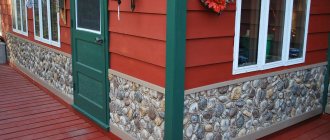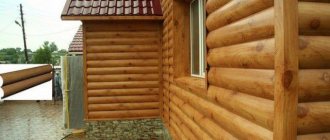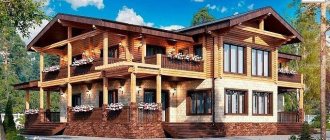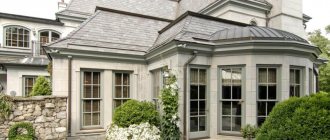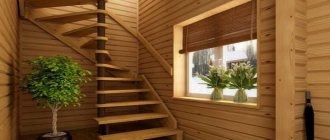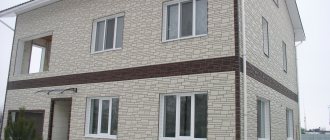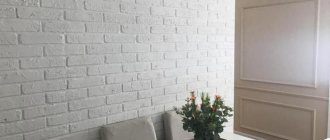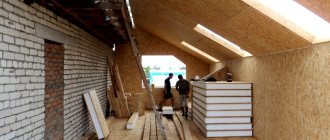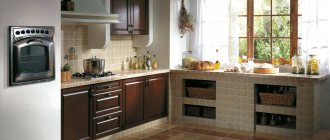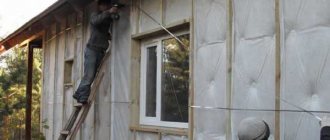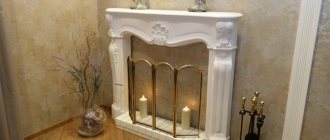Features of cladding
The fireplace easily fits into almost any interior, regardless of style, color scheme and variety of shapes and textures. It quickly fills the space with special warmth and becomes the main “highlight” of the room. At the same time, the fireplace not only makes dreams of home comfort come true, but also acts as a heating element and part of the heating system as a whole.
If everything is clear about the functions of this piece of furniture, then the appearance raises a lot of questions , since the variety of shapes, colors and textures is simply amazing. The result depends solely on the designer’s vision and the materials used to decorate the fireplace. They can be of both natural and artificial origin. It is difficult to determine by appearance how the material was produced and what its cost is, which allows you to reduce the cost of installing and finishing the fireplace, and the beauty of the product will not suffer.
There are a lot of advantages of stone finishing, but there are also certain disadvantages that can influence the master’s decision.
- the high cost of the materials themselves, especially such beautiful stones as marble and granite;
- problems in terms of installation, since it is difficult to find a specialist who has experience in this matter and is familiar with cladding surfaces with stone;
- marble and granite are heavy, which also creates great installation difficulties.
At the same time, the building materials market is replete with decorative stone, which is an ordinary tile with a surface that imitates the natural texture of individual materials. Its cost is not so high and installation does not cause much difficulty, so such materials are chosen by those who prefer a budget, simple, but no less attractive option. A false fireplace often has a wide variety of designs. Such portals can be covered with all kinds of materials.
Electric fireplaces: description, characteristics, device
Basically, the operating principle of electric fireplaces is similar to that of air heaters, fan heaters, and convection-type devices. Often products have the same heating elements. The difference is that in this case the decorative role for the design of the room and options for user comfort are not secondary. A real hearth is imitated: a portal, fire, logs, smoldering coals. Moisturizing, aromatization, and audio accompaniment may be provided.
It is necessary to distinguish between an electric fireplace with and without a heating function, only for decoration; strictly speaking, it is more appropriate to apply the term “false fireplaces” to such models.
Reputable brands in the electric fireplace segment: Dimplex, Twin-Star Inter, Electrolux, Royal Flame, Danville, Zanussi, Alex Bauman, domestic Glenrich.
Electric fireplace design
Elements and composition of the electric fireplace design:
- hearth with firebox - a “heart” with a heating element producing and transmitting heat in the form of a heating element (incandescent filament in a protective tube) or a ceramic-based coil. The firebox has a decorative and protective design: casing, grates, tempered glass. There are also reflectors, reflectors - radiating surfaces for the accumulation and distribution of heat flows. As a rule, they are supplemented with a fan that provides convection;
- portal - a niche for a fireplace. In compact mobile devices, its role is played by the casing, frame, and housing. Externally, the portal can imitate stone, brickwork, have forged metal gratings, and quartz glass screens. Dimensional designs can completely replicate the appearance of conventional fireplaces, have an imitation of a chimney, countertops;
- control system: thermostat, remote control, flame brightness adjustment and similar settings;
- system for simulating fire: LCD monitors, fabric with a fan or a steam generator with lighting, decorative logs, coals, stones.
Artificial or natural stone?
Natural rock is a natural composite that is formed over many years from stone chips, marble powder and quartz, bonded into a single whole using polymer resins. This material was used in ancient times and it did not lose its relevance until the time when brick was invented. Artificial stone has some advantages over natural rock:
- The composite contains light fillers, thanks to which each block has a small weight. This feature of the material allows it to be used to decorate not only the fireplace itself, but also the accent wall on which it is located. Due to its heavy weight, natural stone is not recommended for use in decorating surfaces more than 1 m high.
- Stone for fireplace decor is easy to install, and its pliability and relative softness make it possible to sheathe structures of complex configurations.
- To cut the material, you only need a grinder, while cutting real cobblestone is not so easy.
- The affordable price for artificial stone has perhaps become its main advantage. For a very reasonable fee, you can decorate not only a fireplace, but also part of a wall or a doorway. Natural cobblestones require painstaking processing using special equipment, which results in a high cost of the material.
- Artificial stone is produced in various color variations. The ordinary breed has a meager range of shades. Stones of rare colors will be very expensive.
- The material allows the use of seamless technology when finishing, which is impossible when working with natural wood.
Although purchasing artificial stone for cladding seems like a great idea, it also has disadvantages:
- The natural rock has a unique pattern. No imitation can replicate the natural texture of the material.
- Real stone, due to its hardness, is not afraid of mechanical damage, and its service life varies from several tens to a couple of hundred years.
Although both materials, with the proper approach, allow you to embody the most original design ideas, artificial stone is more “flexible” in this regard.
What materials to use for the portal and mantelpiece
Traditionally, stone is used to build a fireplace portal and countertop, but even artificial agglomerate weighs a lot, and it will require certain work skills from the master. There are also more “friendly” materials on the market that can be easily improved with the help of properly selected cladding. For example, a classic tabletop can be made from a thick board, staining the wood and covering it with thin layers of varnish. A more budget-friendly option is plywood or MDF - after installation, they are covered with small ceramic tiles or laminated with decorative film.
Before choosing the material for making a portal with your own hands, it is worth deciding on the functionality of the decorative fireplace. If this is just an installation or a screen with the image of a living flame, there are no restrictions: drywall, foam plastic, chipboard or natural wood will do. The main thing is that after finishing work they become similar to natural materials.
Using polyurethane elements you can create a luxurious portal for a decorative fireplace
For decorative heating equipment that actually warms up the room, you will have to choose safer options (gypsum plasterboard, foam blocks) or protect the structure with heat-resistant cladding. It is not necessary to build a portal out of brick, but for finishing it is better to use non-flammable or low-flammable products and mixtures: tiles, mineral tiles, plaster.
Decorative brick cladding is not afraid of overheating
Table: Advantages and disadvantages of basic materials
| Indicators for comparison | Tree | Wood-based materials (chipboard, MDF) and plywood | Drywall |
| Weight, kg/m3 | 400–700 | 600–700 to 850 for MDF | 800–850 |
| Bending strength, kgf/cm2 | 1000 | 20–250 | 15–18 |
| Compressive strength, kgf/cm2 | 500 | 60–200 | 100 |
| Flammability group (taken into account only for heating devices) | G3-G4 (G2 after treatment) | G3-G4 | G1 |
| Environmental friendliness | ++ | — | ++ |
| Machinability (milling, drilling, cutting) | ++ | + | + |
It is easy to give solid wood the desired shape, and also to decorate it, if not with carving, then at least with elegant milling. But this will require special equipment, so workability is a very conditional advantage of wood. Its main disadvantage remains that over time it dries out, warps and becomes covered with cracks. When the humidity in the room changes, the array can indeed behave unpredictably. If it is not possible to maintain stable conditions in a room with a fireplace, but you definitely want to use natural wood, it is better to choose species that are not prone to serious deformation:
- pine;
- cedar;
- aspen.
According to their strength characteristics, pressed slabs made from veneer and wood processing waste are quite suitable for the manufacture of an electric fireplace portal. However, unprofessional cutting of sheets leads to loosening of the fibers at the ends, which somewhat complicates the covering of the frame with small elements. The disadvantages include the toxicity of phenolic and formaldehyde resins in their composition, but after finishing with airtight materials, the issue of harmful effects on humans is removed.
OSB can also be used in independent work
As for drywall, it is considered the best material for creating decorative interior elements with your own hands. The low load-bearing capacity of the slabs is fully compensated by a reliable metal frame. The variety of gypsum plaster boards will allow you to choose the appropriate design for any conditions: fire-resistant boards for heating fireplaces, waterproof boards for ceramic finishing.
Glue selection
If you use dense hardwood without defects, the durability of the fireplace lining will depend entirely on the quality of the adhesive mixture and the reliability of its adhesion to the brick base. Cement mortar will not be able to work at this temperature for a long time, so the choice is narrowed down to two options: purchasing a ready-made dry adhesive mixture for special purposes or preparing your own mortar based on fireclay clay.
With ready-made compositions everything is simple; in most cases, the usual Ceresit ST-17 or Knauf “Marble” will be sufficient. You can also use more highly specialized mixtures like Scanmix Fire. The main limitation in the use of this type of glue is the maximum thickness of the seam, which is why the choice of material for masonry is limited to artificial stone. Natural rock has an irregular shape, and it can only be laid on tile adhesive after careful adjustment.
A homemade mortar provides relative freedom in this regard: with it, stones can be laid without tedious grinding, which will give the fireplace a more authentic look. The solution contains fireclay clay, river or mountain sand and cement of a grade of at least 300 in a dry weight ratio of 3:1:1. The clay must be rubbed through a sieve in advance, removed from debris and inclusions, and then filled with water for 40–50 hours. After this, sand is added to the mixture; it is necessary to eliminate cracking at the initial stage of setting. Cement is necessary to accelerate setting and increase adhesion; it is added immediately before laying. In such a solution it would not be superfluous to use heat-resistant plasticizers. Final mixing should be done using a mixer or drill with a tile adhesive attachment.
How to prepare the masonry surface
The third component of a high-quality fireplace cladding is a carefully prepared base. It is strictly necessary to prime brickwork and the composition for this should be of the highest quality possible. It is recommended to use Knauf Tiefengrund or similar acrylate-based primers Dufa Putzgrung, Marshall Export Base, but only for interior work.
The second step is to secure the plaster mesh. The cell size must be chosen twice as large as the planned thickness of the adhesive seam. You cannot fasten the mesh with dowels in plastic plugs; you should use metal anchor wedges with a diameter of 6 mm. The fastening points are located with a frequency of about 25–30 cm. It is necessary to fasten into the body of the brick, and not into the seam. To prevent the masonry from splitting, turn the hammer drill to low speed.
Additionally, you can “tear” the surface of the masonry by tapping it with a hammer and chisel to form many notches. This will significantly increase adhesion, but this can only be done at the initial stage before priming. At the end of the preparation, the surface must be thoroughly dust-free; you can also open the masonry with another layer of primer from a hand sprayer.
Step-by-step instruction
If you want to create a fireplace in your home yourself, you should consider several rules using the example of a plasterboard portal:
- Before you make a fireplace yourself, you will need to draw drawings for the future design. After the sketch is ready, decide which wall the portal will be located near in the room and make calculations, marking the location for the base of the portal.
- If you want your fireplace to be in a corner, you will need to first assemble the base and then mount the structure into the wall. Other types of fireplaces involve assembling the frame part directly onto the wall.
- Cut the metal profile taking into account the markings on the wall. Then you can assemble the back part of the portal. The base is attached using self-tapping screws; dowel-nails are useful for attaching the frame to the wall.
- Assemble the base gradually and constantly check the drawing. Otherwise, you may get confused in the calculations and end up with a crooked design. To give the portal stability, place spacers every 30 centimeters. If your fireplace has an arch, you should make cuts on the sides of the profile, after which you can begin to shape it into an arc.
- Now you can cut the drywall. A hacksaw or a regular jigsaw is suitable as a tool. If you do not have these tools, then take an ordinary knife. Measure each side before cutting. The parts are screwed to the base using a 25 mm self-tapping screw.
- Now you have the base for the decorative portal ready and you can begin cladding the structure.
- Many apartment owners install their fireplace in the wall unit. There is a TV above the “hearth”, which looks very impressive. To equip your project with lighting, you will need a connection to the power supply or regular candles.
Layout diagram
The entire fireplace surround can usually be divided into a number of flat sections. These include the front and side walls, and it is also possible to expand the lower part to form a base. The fireplace shelf, as a rule, is not lined in order to have an additional functional surface.
Flat areas must be displayed in the development diagram on an A4 sheet and all key dimensions must be indicated. Based on the resulting cutting, a mosaic of stones and their fragments is assembled on the floor, which are fitted to each other as closely as possible. The seams between the cladding elements should not exceed 20–25 mm; optimally, it is recommended to adhere to values of 5–6 mm.
It is not very difficult to fit irregularly shaped stones closely, but at the same time it is quite problematic to maintain the natural appearance of the edges. Most rocks can be cut perfectly with an angle grinder disc for concrete. You can add chips and breaks to the edges using a pick; a disc-shaped grinding disc, popularly called a “turtle,” will also be a good help.
Before cutting and grinding, stones must be soaked in water. This will not only protect the workplace from dust, but will also allow you to clearly see the finished result without color distortion due to uneven refraction, and subsequently improve adhesion with the solution. The edges of each cut section should be left smooth with an overlap along the line of intersection of the planes of about 30–40 mm. It is very good if you can provide an angular dressing: where there are gaps on the edge of the flat section of the reamer, stones of a suitable shape will be inserted from the adjacent plane.
Plasterboard cladding, eliminating cracks
The portal is made of metal profile. Next, the work was done using drywall
Your own portal for an electric fireplace allows you to match the interior as clearly as possible. However, before achieving such an effect, it must be lined. To do this, sheets of drywall are taken, marked and cut into the necessary parts. After this, they are gradually screwed to the frame until it is completely covered, which will provide it with additional rigidity and stability. As a result, we will have a complete object that will still need to be processed, eliminating all the cracks and holes. The necessary actions are carried out using a spatula and putty, which fills all problem areas. For particularly large gaps, application is carried out in 2-3 stages, until the gap is completely closed and a monolithic surface is formed in its place.
As for the upper tier of the portal, which plays the role of a shelf, it should be reinforced with a wooden board. Otherwise, the plaster may not withstand the elements that will be installed on top of the fireplace and will fail.
A wooden base will eliminate this problem, making the shelf not only durable, but also capable of withstanding increased loads.
Tiles suitable for finishing
Not every type of tile is suitable for finishing a fireplace. Depending on the manufacturing technology and structure, the material is classified into several types. Each of them differs not only in cost, but also in characteristics, installation features and service life. The tiles are selected based on the characteristics of the room that is decorated with a fireplace.
For example, for a bathhouse they buy heavy-duty material that will not be afraid of high temperatures and high humidity. For the kitchen, an imitation with similar characteristics is selected. Living rooms, bedrooms, and offices are less demanding on tiles. Their microclimate is stable.
Terracotta
The main component of the tile is clay. The material attaches perfectly to any surface using ordinary liquid nails. Terracotta has high vapor and air permeability. This helps the decor absorb excess moisture in the room and participate in the formation of a favorable microclimate. Terracotta is used to cover not only fireplace portals, but also the facades of houses. The material is frost-resistant, so it is ideal for decorating rooms with unstable temperatures (for example, baths). The special texture of the surface allows terracotta to release heat for a long time, so fireplaces decorated with such tiles cool down more slowly. In terms of strength, the material does not lag behind stove bricks.
Majolica
Majolica is glazed terracotta. The additional glossy layer allows the surface to be cleaned with abrasive compounds, contact with which will not damage the tile. In terms of characteristics, majolica does not lag behind terracotta. It is also easily fixed to the surface, gives off heat for a long time, and can be used in any type of room. During production, the top layer of majolica is decorated with patterns. A wide range of designs allows you to choose the material to suit your interior design.
Heat-resistant clinker tiles
Clinker is made from several types of clay and fireclay powder. Natural dyes are added to the composition. The material is environmentally friendly. Since its structure is low-porous, it releases heat slowly. Frost resistance allows you to decorate fireplaces in houses and temporarily used baths. The thickness of the clinker varies from 0.9 to 1.2 cm. The tiles are strong, durable and insensitive to mechanical damage. The clinker is secured to the surface with liquid nails. Unfortunately, the material does not have the adhesion of terracotta, so during finishing they additionally use a reinforcing mesh.
Porcelain tiles
We owe the appearance of porcelain stoneware to the Italians. The technology for producing new facing material was first tested at the end of the last century. The monolith is non-porous, which significantly increases its service life. Porcelain tiles are made from marble chips, metal oxides, quartz sand with the addition of pigments by pressing under high pressure. The artificial material performed well during tests at low and high temperatures. This quality of porcelain stoneware allows it to be used when decorating fireplaces in steam rooms, in the kitchen and for finishing the facades of houses. The material can decorate a room with almost any style, as it is available in a wide range of color and texture options. The surface of porcelain stoneware does not fade under sunlight.
Tiles
Tiles are piece finishing parts made from special types of clay. Their surface is treated with glaze, which gives it a glossy shine. Due to the high cost, tiles never managed to become market leaders. Their manufacturing technology involves firing at high temperatures, which makes the material heat-resistant and durable. Tiles are characterized by high heat transfer, which is useful for those rooms where the fireplace is not just an interior element, but also an alternative source of heat.
How to decorate a fireplace
Fireplace decoration with natural stone
To decorate a fireplace with natural stone, the following types are most often used: marble, granite, shell rock, sandstone, soapstone, granite ceramics. Each of them has its own characteristics of operation, texture, natural pattern
If you are not limited on funds and want to add style, nobility and elegance to your home, pay attention to this option for finishing fireplaces
Marble for fireplace cladding
This noble natural stone is considered the most common material for finishing fireplaces. With a wide range of shades of grey, green, white, pink, black and brown, you shouldn't have a hard time choosing. The pattern on the cut depends on the structure of the stone and the method of cutting it. Marble can be recognized by the characteristic shades of inclusions, stripes and veins. Different processing methods make it possible to obtain different textures of the material: aged, smooth, glossy.
Marble goes well with any other materials used in construction. The most profitable option for using stone in finishing is considered to be ground marble. Almost all types of this rock are suitable for grinding into crumbs of various fractions, from which mosaics or filler for finishing materials are produced. The most popular types of marble are black and white, plain without interspersed with other shades.
Fireplace trim with granite
The shade of the stone directly depends on the mining area. It is thanks to its durability that granite has enjoyed its popularity for many centuries. History confirms some facts about the use of granite fireplaces in estates and castles that are more than 100 years old. In addition, it is worth noting that the material can be processed without any particular difficulties, allowing various design ideas to be translated into reality. The combination of granite with mosaics and various tiles looks quite impressive.
Advantages of fireplaces made of marble and granite:
- resistance to temperature fluctuations;
- environmental friendliness (do not emit toxic substances when heated);
- stunning appearance;
- possibility of combination with clay, metal, glass, wood, and other types of natural stones;
- ease of operation;
- strength and reliability.
Sandstone fireplace trim
This natural material is very often used for finishing fireplaces, as it has the ability to withstand high temperatures. In addition, it is durable and has a long service life. Its use makes it possible to embody original design ideas.
The advantage of sandstone is its ease of processing and cutting. Also, the material has a wide selection of shades, which allows you to create unique paintings. Sandstone combines environmental friendliness, decorativeness, practicality, and also affordable cost.
Granite ceramics
This is a decorative stone for facing a fireplace, which is made from natural clay. The appearance of the finished product resembles the structure and color of marble or granite. The main difference from ceramic tiles is the basis for production. For the manufacture of granite ceramics, clay is used, which has increased strength. It is this component that ensures the reliability and strength of the material, immunity to mechanical stress, and resistance to high temperatures. During long-term use, granite-ceramics does not lose its original appearance, maintaining its shine and color.
Shell fireplace
This is a unique natural material that helps create a unique decoration of the fireplace with decorative stone. The porous structure of the stone provides a high level of thermal insulation and resistance to temperature fluctuations. Shell rock contains the remains of seashells and mollusks that were fossilized many years ago. In order to create the desired shape from a stone, it must be polished.
For cladding fireplaces with natural stone, white and yellow shades of shell rock, which have additional shades, are most often used. The material allows you to cut out various details from it to decorate a decorative item.
Using plaster
Finishing a fireplace with your own hands is possible by applying plaster. This method is very simple and does not require large financial investments. Cladding does not require strengthening the foundation of the fireplace, and after some time the surface can be easily updated or another decorative solution can be chosen.
You need to choose heat-resistant mixtures that include fixing components, for example, clay, lime, asbestos additives, hemp and straw. If the plaster contains fibers, then its reinforcing properties increase by several orders of magnitude.
And for decorative purposes, the surface must subsequently be painted with heat-resistant paint materials.
The plaster is applied using the following technology:
- removing old coating and cleaning from dirt;
- moisturizing the walls of the structure;
- jointing masonry joints up to 10 mm deep for better adhesion;
- heating the base;
- fastening reinforcing mesh with nails or screws;
- diluting the mixture and applying it to the surface;
- drying the plaster for 2-3 days with periodic heating of the fireplace;
- applying decorative paint or putty to the surface.
Christmas decorations for the fireplace
To decorate your fireplace for the New Year with your own hands, you don’t have to empty the store shelves. You can use Christmas tree decorations and garlands. And also make your own decor.
The first thing that comes to mind is socks, for which we first decided to make a fireplace. They are hung on the fireplace to be seen as gifts in the morning.
Initially, think about the style of decorating your fireplace so that it fits into your interior. To do this, you can use paint, glitter, wallpaper or self-adhesive.
You can make a fireplace in eco-style, using a minimum of paint and bright colors, and use small real firewood for decoration.
An example of a fireplace covered with imitation brick film. For decoration, there are candles that will not be lit. And also garlands, toys and socks, selected in the same style.
A fireplace with imitation fire and wood, as if made of natural stone.
Decoration with tiles
These are decorative tiles made from ceramics or clay. Their shape is box-shaped. This cladding ensures quick heating of the fireplace and long-term heat retention. The coating is durable, environmentally friendly, moisture and heat resistant.
With the help of tiles you can hide structural defects and strengthen it. But at the same time, such decorative decoration of the fireplace has some disadvantages:
- high cost;
- complexity of masonry;
- heavy weight of products.
At the first stage of cladding, it is necessary to prepare the surface. It is cleaned, the seams are deepened by 10 mm, and self-tapping screws are attached to them. The plane is primed, and then the mesh is attached. For quality work, the level is checked and then the beacons are fixed.
A clay mixture is used for masonry. During the cooking process, you need to sift the clay, removing lumps and stones. The clay is filled with water and kept in this form for 24 hours. Then you need to mix clay with sand in a proportion suitable for the heat resistance level of the fireplace.
After determining the pattern and order of laying, work is carried out in the following order:
- pre-soaked samples are applied to the wall for testing;
- The tiles are fixed from the corner, and the solution is applied to their reverse side;
- Pins are attached to the holes in the tiller, a wire is fixed to them, which is tied to the mesh and to the masonry with a self-tapping screw;
- The pumps are connected together with staples, and the space between them is closed with mortar.
Option one. Plasterboard portal for fireplace
Plasterboard construction is perhaps the cheapest and easiest option to implement. But it has one significant drawback - this is that everything needs to be completed with the layout of the portal while drawing up the floor plan. Later you are unlikely to be able to make any adjustments or changes to this kind of system. In a word, think over and draw up a project in advance, fully agree on all dimensions.
Corner portals made of gypsum plasterboard look especially attractive. The production of such structures is similar to any other made from this material.
Step No1. First you need to make a diagram. In our case, it looks something like this.
Then you need to take plasterboard profiles, cut them according to the drawing and assemble the frame of the future portal from them. You can focus on other dimensions or shapes - this largely depends on the specific situation.
Step No2. Cut the drywall into pieces of the required size and screw it to the frame. But before fixing the material completely, you need to try the hearth against the portal again and, if the need arises, make certain adjustments. Finally, completely cover the frame with plasterboard.
ff83a91509192125f351240bc9b59d60.jpe
Step No3. The next stage is plastering the resulting structure, which is recommended to be done using gypsum plaster. The working mixture must be mixed in strict accordance with the manufacturer's instructions. If you want, you can prepare a thicker plaster mixture to imitate stucco, stone, etc.
Step No4. Next, you need to cover the dried plaster with facade paint or varnish. Thanks to this, the material will be additionally protected and therefore will not crack.
There is another option - you can completely abandon plaster, as well as paint, and instead veneer the product with another material suitable for this purpose.
This kind of portal can actually be made from plasterboard. Now let's move on to the next option.
Wood finishing
This option may not seem very good from a fire safety standpoint. But it is not so. Thanks to the naturalness of the wood, a very beautiful fireplace finish is obtained.
It is necessary to use heat-resistant species - alder or ash with a special coating against fire. It is also advisable to trim only individual structural elements that are not in contact with the firebox with wood. And cover it with a protective screen.
Cladding a fireplace is a very important stage in the interior design of a room. By showing creativity using original materials, you can decorate your home and make it more comfortable.
Main components of an electric fireplace
An electric fireplace will perfectly decorate the interior of an apartment
Creating an electric fireplace with a living flame effect yourself is a labor-intensive process. But he's worth it. It will brighten up more than one evening for you. First of all, before you start building this unit, you need to figure out what its main components are. It includes two main elements: the hearth and the portal. The first is an electronic system in which flame combustion occurs. The second is the frame where the firebox or hearth is placed.
There are a large number of options for building an electric fireplace on your own. But they are all united by these two elements, which are manufactured separately and then combined into one structure.
Stylistic directions in fireplace decoration
Various types of stoves are built into very different interiors. It is important to maintain the integrity of the interior and select an acceptable color scheme. A fireplace is often a zoning detail that allows you to neatly divide a spacious room into two functional parts. Most often, fireplaces are built into classicism, baroque, loft, Provence, and country interiors.
In English style
The hearth in the English style is U-shaped, equipped with a large firebox and a wide mantelpiece. Suitable finishing materials are valuable wood species (wenge, zebrawood, bog oak, Karelian birch, etc.) or their high-quality imitation, ceramic tiles, metal (forged elements). Most of the lines here are smooth, the corners are strictly straight, all the details have a strictly regular shape.
Provence style
The Provence fireplace has the simplest possible shape, but every detail is worked out to the maximum. The color of the structure is usually white, other suitable colors are pastel, cream, pale pink, bluish, soft green. Suitable materials include decorative plaster, ceramic tiles with floral patterns, and light wood, including painted and artificially aged wood. Forging will also come in handy.
Country style
Country is a style associated with rustic simplicity and comfort, which is why the fireplace here is finished “modestly, but tastefully.” This design is rather heavy and very voluminous, so independent finishing is very labor-intensive. The portal itself is D-shaped; above the firebox there is a thick beam, most often stone. For decoration, artificially aged natural stone (shell rock, sandstone), brickwork, imitation stone, brick are suitable.
Classic style
Classic is usually associated with harmony, symmetry, correct geometry, both of the object itself and of the entire room where it is located. A few stucco elements are allowed here - moldings, rosettes, half-columns, pilasters, corner parts, etc. Forged, ceramic tiles made in light colors with unobtrusive decor, including those imitating wood, are also acceptable.
High-tech style
A fireplace in high-tech style is necessarily smooth and shiny. Rarely is it located against a wall - usually these are located in the corner, island, suspended, rotating structures. The main finishing materials are metal, glass (fireproof, transparent, patterned, partially tinted, etc.).
Fire-resistant glass is characterized by high heat transfer, which is why it is used in structures created specifically for heating.
In ethnic style
Ethnic fireplaces - colorful oriental and strict European designs. Less often, it is an imitation of a “Russian stove” fit into the corresponding interior. Popular finishing methods are decorative plaster, whitewashing with chalk, coating with clay mixed with various dyes, mosaic of colored ceramic tiles. There are no patterns here at all, or they are as winding and multi-colored as possible.
Portal decor for an electric fireplace
The decorative design of the electric fireplace portal can be anything. However, it should be remembered that in no case should it violate the integrity of the composition of the room, but only slightly shift the emphasis to the side. A good solution for decorating an object is to lay ceramic tiles, which will immediately make it elegant and natural. Moreover, installing the material on a flat plasterboard base is quite simple.
In addition, you can cover the building with structural plaster, wallpaper or paint, the main thing is that it is combined with other coatings and objects located in the room.
To achieve the desired effect, decorating the finished object is carried out based on the stylistic orientation of the entire room and only in accordance with it. This is the only way to be sure of obtaining a positive result, which will not only succinctly fit into the design of the room, but will also significantly embellish it.
To finish this article, check out the video: Modern electric fireplaces in the interior.
Perhaps after this you will like the electric fireplace even more.
Disadvantages of natural stones
- Marble slabs fade over time and small cracks form on their surface;
- All natural stones are mined from the depths of the earth, so they have a high cost;
- Natural granite emits a natural radioactive background;
- Sandstone is characterized by abrasion and the ability to quickly absorb moisture from the air;
- Due to its loose structure, shell rock can accumulate soot, dust and get dirty.
On the other hand, in comparison with natural beauty, such shortcomings are negligible and therefore, when choosing finishing materials, be guided by practical and theoretical knowledge about stones.
Advantages of natural stones
- Unique, diverse and beautiful in multiple manifestations of textures and shades of color.
- Granite has powerful natural energy; it has a beneficial effect on the human psyche and calms the nervous system.
- Stone finishing can be used in rooms without regular heating, as it is resistant to temperature changes.
- Almost any shape and configuration of the structure can be veneered.
Finishing with natural stone gives a spectacular appearance and pleases residents with its consistency for many years.
The role of the fireplace in our lives: the process of operating the device
Today, traditional bulky fireplaces, consisting of a firebox and a chimney, are a thing of the past, and their construction is extremely rare and requires significant costs. And not all premises are suitable for their construction, which also contributed to their partial oblivion. However, such difficulties do not mean that the fireplace should not be used at all.
Constant progress in the technical field and the field of electronics has led to the emergence of products that are a complete imitation of a fireplace, capable of replacing it.
Electric fireplaces are a unique example of modern technology that has made it possible to enclose the energy of a fireplace in a small box and harness it.
A modern version of an electric fireplace. The portal cladding is made of wood
In itself, a similar product is absolutely safe, since it does not heat up at all during operation, takes up little space and makes it possible to admire a full-fledged fireplace. However, the main advantage of the product is the absence of combustion products, which allows it to be placed in any room, despite its size and stylistic orientation. At the same time, the appearance of the electric analogue resembles a small rectangular box, which, when turned off, does not at all resemble a traditional fireplace. The construction of a portal, which is a distinctive feature of any fireplace system or even its calling card, will help give it a classic appearance.
Portals for electric fireplaces are purely decorative structures designed to structurally highlight the hearth against the background of the entire interior, separating it and visually delimiting the room. They can be made from absolutely any materials without fear of fire or damage, since the body of the product practically does not heat up during operation, projecting the image only on the screen. Based on this, we can conclude that portals are used only to create an accent on the fireplace and should not violate the integrity of the existing design.
Let's start work
The beginning of fastening is a crucial moment.
As you start, so will you finish.
- At the beginning of facing the fireplace with stone, finishing is carried out from the corner. Laying should be done alternately, alternating long and short elements.
- First of all, attach the thickest tiles and use the minimum amount of mortar for this. This will help you in further work.
- To make the structure look more natural and aesthetically pleasing, the installation elements should be adjusted to size. To adjust the size, use wide nippers or a hacksaw. Try to mount the treated sides so that they are either below or above the viewing angle.
- Apply a layer of mortar about 1.5 cm onto the installation element. Use a trowel for this. Control the distribution of the solution on the surface; it should be completely and evenly covered.
After laying the mesh, apply a layer of mortar
- When laying the element, it should be lightly pressed and slightly moved to different positions by pressing. This will help to completely fill the seam and secure the element most correctly.
Seams are being adjusted
- When installing, the solution should protrude slightly from the seams.
- When carrying out seamless masonry, attention should be paid to the end seams. They must be completed. To do this, you need to apply the solution to the entire surface of the element (excess is removed during shrinkage). After squeezing out, excess mortar should be removed using a trowel.
- When attaching fasteners to a surface that is too dry or carrying out installation work in dry weather, the surface of the elements and the laying plane should be moistened using a sprayer or a paint brush. The styling elements can simply be placed in a container of water, and after 2 minutes in the water they are ready for installation.
- When installing elements seamlessly, they must be wetted, regardless of weather conditions.
- After the solution gets on the surface of the cladding, do not remove it immediately, let it dry a little.
Materials
- Made of wood. Making portals from natural wood is considered more difficult than when using other materials. The fact is that wood is deformed under the influence of temperature and humidity changes, so such a portal is not suitable for every fireplace. In order to minimize the harmful effects of the above factors, it is necessary to use only well-dried wooden boards and bars; For work, use synthetic-based glue that does not contain water; on the surface of such a portal on all sides there must be a high-quality coating made using heat-protective acrylic varnish. It is possible to use old furniture (cabinets, wardrobes, bedside tables) to save money.
- Polyurethane. This material is often used in the manufacture of portals for fireplaces. It has a significant degree of wear resistance, does not crumble, crack, or chip. It is also quite heat-resistant, so a polyurethane portal can be used when installing an electric fireplace. Another advantage is the variety of final design options: it can be painted, covered with gold or patina. Such a portal will serve for a long time, and it is also very light in weight.
- From MDF. MDF or fine wood fraction is also a very popular material in the manufacture of portals for fireplaces. MDF is made from fine sawdust bonded together with paraffin and lignin, therefore it is an environmentally friendly material; In addition, it is very pliable, easy to process, it tolerates high air humidity well and is not too prone to deformation.
- From chipboard. Most often, when constructing a fireplace portal, a type of chipboard is used - laminated chipboard (laminated chipboard). This material is cheap, has a high degree of resistance to elevated temperatures and various mechanical stress, and has the appearance of natural wood. However, it is not suitable for creating an original relief, because fine processing of this material is excluded.
- Made from plywood. When choosing plywood sheets for assembling a fireplace portal, you must take into account that only plywood for interior decoration is suitable for this purpose. It has a certain marking - from 1 to 4, where 1 means the highest quality of the surface. With the help of such plywood, you can make a rather elegant portal for the fireplace, and if the sheets of plywood are fastened with a wooden beam, you get a lightweight mobile structure that, if desired, can be moved from wall to wall. Of course, with all its undeniable advantages, plywood has a significant disadvantage - even taking into account the waterproof surface treatment of its sheets, moisture will still sooner or later penetrate inside and deformation will occur.
- From plasterboard. This option is probably the simplest and cheapest. But when designing it, you need to take into account the following nuance - this structure is created at the stage of planning the premises, further movements and adjustments are not allowed. Therefore, careful coordination of dimensions and other necessary attributes is necessary, such as the presence of ventilation holes and space for electrical wiring. The advantage of plasterboard is its plasticity; with its help, the fireplace portal can be given any shape.
- Made from natural stone. The most expensive and, perhaps, the most beautiful material for making a fireplace portal. Due to the heterogeneous structure of the stone, each portal assembled from it will be unique. The manufacturing process from it is quite labor-intensive, but the stone portal will delight you for many years and will give the interior a rich and elegant look.
- From parquet boards. Most often, such portals become false fireplaces, but it is possible to build a shallow electric fireplace there. This design looks quite original, especially if it is made from pieces of different colors and textures. To obtain a beautiful shade, it is recommended to cover the boards with stain at the preparation stage.
7 photos
How to properly unstitch seams?
To give the masonry a more natural and aesthetic appearance, the joints are completely filled with mortar. To perform jointing, it is better to use only branded jointing materials.
Do not use mixtures that are intended for laying tiles.
- To completely fill the seam, you can use a seam filling bag. You can do it quickly yourself, you just need to cut off 1 corner of a regular plastic bag, only the hole should be slightly smaller than the seam to be filled.
- Fill the bag with mortar (do not pour too much, the volume should fit in the palm of your hand), apply pressure and force the mortar into the seam. Try to avoid getting liquid on the front surface.
- We wait until the mortar in the seams begins to set, after which we need to remove its excess using a trowel and at the same time press it into the seam. Do not try to remove the sagging immediately after filling, you will only stain the front part.
- After removing the excess, you should finally clean the seams using a broom, which should be made of plant materials. Do not use solvents for cleaning.
- Jointing is an extremely important work process that completely prevents moisture from entering the surface. If moisture penetrates under the cladding, the surface may crack.
End of work
After the surface of the structure has completely dried, it can be treated with a special hydrophobic composition. It forms a translucent protective film on the surface. This coating does not allow moisture to pass through and is not destroyed when the structure moves. It is good to remove dust from it. It especially helps with temperature changes (if the fireplace is located in a country house where there is no constant heating).
The job was done correctly. You can take a few steps away from the structure and admire your work.
DIY electric fireplace
The easiest way to make an electric fireplace with your own hands is to buy a ready-made fireplace and create a portal with your own hands. You can also purchase only the heating unit and install it in a homemade firebox.
The first step is always planning with at least a rough drawing. It is important to indicate the exact dimensions in order to avoid distortions in the structure.
You can create a portal without some elements, but let's look at the full view, starting from the bottom:
- a podium with a floor frame around the perimeter, that is, a lower tabletop on which the frame is placed;
- the portal itself;
- upper tabletop (top of the portal);
- fake chimney. You can do without it.
Assembly is carried out in the above sequence. To create an electric fireplace for an apartment with your own hands, step-by-step instructions include the following steps:
- Plan, drawing.
- Selection of materials for the frame: profiles, wooden planks, for cladding - gypsum plasterboard, plywood. Self-tapping screws, bolts, screws, nails and even glue are suitable for fastening.
- Creating a frame, covering it and decorating it.
- Arrangement of firebox, fireplace hearth.
Frame
The frame can be assembled from metal strips fastened with self-tapping screws, rivets, bolts and nuts. You can use profiles from prefabricated shelving. For example, the outer edges should be made with rack profiles (60×27 mm), and the lintels with guides (27×28 mm).
There should be at least 18–20 cm from the firebox to the walls of the internal niche. The frame is heavy, so it must be secured to the wall with self-tapping screws and dowels.
The lower tabletop is fixed with corners, the portal frame is mounted on it, so the base is strengthened - more profiles are used, with smaller gaps. Usually the portal is 2 times wider. The firebox space is separated by horizontal slats, strengthening the structure. The portal is crowned by another tabletop.
The sheathing is made of plasterboard - it can be easily cut with a hacksaw. For fastening, the same self-tapping screws, bolts are used, even construction glue will do. Instead of gypsum board, you can use any suitable materials - plywood, tin.
The final stage is painting, or you can use wallpaper and similar materials. There are also thick polymer flexible sheets with imitation stone on sale.
Using the above principle, a chimney is created (you can do without it). Usually it has a width equal to the portal, but protrudes less. If it is used to hang a TV, then the fixation point is additionally reinforced with jumpers made from profiles.
Heating element from other devices, reflectors, fans
To make an electric fireplace “from scratch” with your own hands, we first select a heating element. Any incandescent coil from other devices will do, but if you take it, for example, from an iron, you will need several pieces for a power of 1–2 kW. For this reason, it makes sense to use larger heating elements, for example from air heaters, convectors. You can take such working devices and decorate them like a fireplace, without even disassembling them.
The factory-made electric hearth and firebox can be placed on any surface - since there is no fire or sparks, and the casing of the structure is sufficient to prevent heating from causing a fire. It is important to place the heating element, purchased or removed from other devices, on a thick, completely non-combustible base - a layer of crushed stone, bricks, metal sheets, a structure with legs. This will also raise the device, allowing heat to spread more efficiently.
It is important to frame it with reflectors (reflectors) - any metal sheets, tin. By placing mirror surfaces (you can attach foil to the metal) behind and on top of the firebox, you will get a three-dimensional visual effect of the flame.
Fans will improve the distribution of heat; in their role, you can use impellers from household appliances (from hoods, etc.), and computer coolers.
Decoration, imitation flame
The imagination for decoration materials is limitless:
- any textured real stones, coals, logs;
- imitations made of cardboard, plastic, papier-mâché;
- lighting is done with ordinary light bulbs;
- To simulate fire, you can take a small computer cooler and thin fabric.
